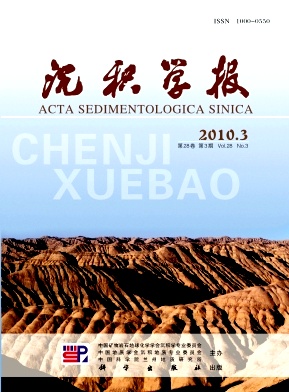Origin and Environmental Significance of Giant Ooids in the Early Triassic: a new kind of anachronistic facies
- Received Date: 1900-01-01
- Rev Recd Date: 1900-01-01
- Publish Date: 2010-06-10
-
Key words:
- giant ooids
Abstract: Oolitic beach facies of highenergy was widely distributed in the Lower Triassic Strata of South China under the background of carbonate ramp, particularly within a certain quantity of giant ooids. Examined the sizes of giant ooids are mostly between 2mm and 6mm, some up to 12mm, and the nucleus predominantly consist of granular calcite and peloid. All giant ooids exhibit concentric laminae and tangentially oriented crystals, suggesting their originally aragonitic mineralogy. Unites of giant ooidsbearing oolitic and bioclastic limestone deposited alternately, reflected the relative sealevel changes at that time. The occurrence of such giant ooids which diameters over 5mm are commonly developed in the Neoproterozoic, however, were extremely uncommon after the Cambrian. Numerous giant ooids were widespread occured after the endPermian mass extinction, yet eliminated following the radiation of the Mesozoic biotas and the normalization of marine environment. It is implied that giant ooid is a new kind of anachronistic facies, and its occurrence apparently relate to biotas and marine environment at that time. This paper is based on detailed analysis of production background, microscopic structure and sedimentary characteristics of giant ooids, therefore, it is available to aid our understanding of their origin, explore the harsh marine environment and the particular ecosystems under the PaleozoicMesozoic transitional events.
| Citation: | LI Fei. Origin and Environmental Significance of Giant Ooids in the Early Triassic: a new kind of anachronistic facies[J]. Acta Sedimentologica Sinica, 2010, 28(3): 585-595. |






 DownLoad:
DownLoad: